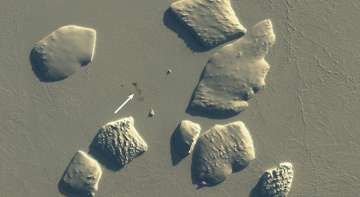Researchers have spotted patches of penguin poop in new high-resolution satellite images of Antarctica. This discovery has revealed the presence of small emperor penguin colonies that were previously overlooked. According to the researchers, there is a total of 61 colonies--eight new colonies as well as three newly confirmed.
According to Science News, Peter Fretwell, a geographer at the British Antarctic Survey in Cambridge, said that the new colonies tend to be in regions highly vulnerable to climate change, including a few out on the sea ice. One newly discovered group lives about 180 kilometers from shore, on sea ice ringing a shoaled iceberg. The study is the first to describe such offshore breeding sites for the penguins.
On Wednesday, the team reported these findings in a journal called Remote Sensing in Ecology and Conservation.
Penguin guano shows up as a reddish-brown stain against white snow and ice, as per reports. Before 2016, Fretwell and BAS penguin biologist Phil Trathan hunted for the telltale stains in images from NASA’s Landsat satellites, which have a resolution of 30 meters by 30 meters.
Unlike other penguins, emperors (Aptenodytes forsteri) live their entire lives at sea, foraging, and breeding on the sea ice. That increases their vulnerability to future warming: Even moderate greenhouse gas emissions scenarios are projected to melt much of the fringing ice around Antarctica, as reported by Science News.
This ice loss could decrease emperor penguin populations by about 31 percent over the next 60 years, an assessment that is shifting the birds’ conservation status from near threatened to vulnerable.
